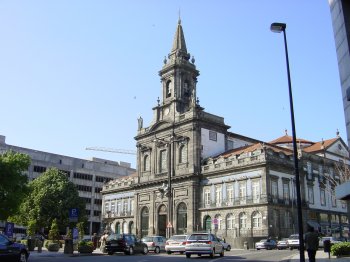Explore the best places
Results for Mosteiro dos Jerónimos in Portugal
Casas da Lapa
- hotels
Rua Eira de Costa, 10
6270-651, Lapa dos Dinheiros
The complex of Casas da Lapa, situated in the Serra da Estrela Natural Park, offers eight double rooms, decorated with comfort and refinement. The houses, dating from 1832, were built in terraces, making the most of the land in the village of Lapa dos Dinheiros, about 700 meters above sea level. The cascade of Anchovy passes beside the houses, which are about three miles from the river beach of Ribeira da Caniça.
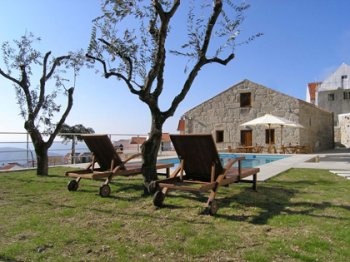
Hotel SJ
- hotels
Avenida Francisco Sá Carneiro, 170
3460-523, Tondela
This space has 41 double rooms, all equipped with satellite TV, radio, air conditioning and telephone. Has three meeting rooms with a capacity of 480 people, pool, party room and restaurant. Located in the city of Tondela, boasts a lush landscape where you combine the charms of the Serra do Caramulo and the plateau area and the Green Valley of Crossbowmen, the river beaches bathed by the river Dão and the wealth of historical heritage and local culture.
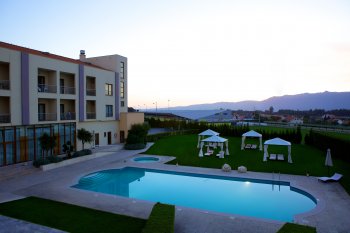
Parque Eduardo VII
- country
- leisure
Parque Eduardo VII
1070, Lisboa
A park with 26 hectares, located at the top of Avenida da Liberdade. Its current configuration is by Keil do Amaral (1945). It has a central strip covered with grass, flanked by a sidewalk in Portuguese pavement. Here you can also find various sculptures, a viewpoint, esplanade and a lake. Also noteworthy is the Estufa Fria, with a great diversity of plants from various parts of the world. There is also the Carlos Lopes Pavilion, used for conferences and concerts.
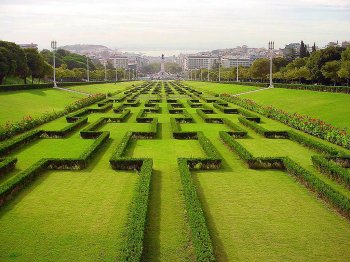
Aqueduto das Águas Livres
- heritage
Carenque - Palácio de Queluz
2720, Amadora
Belonging to the set attached to the Águas Livres aqueduct, it is an extensive stone aqueduct created to carry water to the Terreiro do Paço de Queluz for the royal stables' consumption. The work was created at the site of two springs: the Gargantada spring and the Pocinho spring, and served several fountains in Queluz. Built by King João V in 1731, it was only finished in the mid-19th century. The main section is 14 kilometers long, eight of which are in the municipality of Amadora.
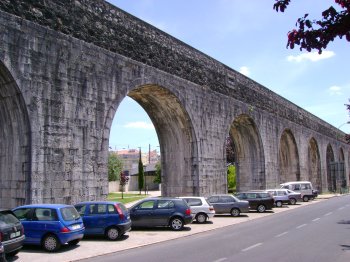
Convento de Santo António / Convento do Seixo
- heritage
Rua do Convento
6230-045, Aldeia de Joanes
Antigo convento masculino da Ordem de São Francisco, pertencente aos Capuchos da Província da Soledade, datado do século XVI. Apresenta uma planta longitudinal de volumes articulados de disposição na horizontal. No interior, destaca-se o claustro com dois pisos, o inferir com arcadas e o superior com janelas de peitoril e de sacada.

Castelo da Lousã / Castelo de Arouce
- heritage
EM580
3200, Lousã
Castle located on the outskirts of the village of Lousã mountain countryside. Consists of the donjon, torn by loopholes for a small irregular fence and some cubelos. Its entrance is flanked by two turrets and three more are distributed along the walls. The whole Castle is in Silurian shale, rock of the region, except the door trim of the keep, which is white stoneware. During the Reconquista, this castle was assumed as a strategic point, locking the Moorish incursions from the vale do Zêzere.

Igreja de Santiago / Panteão dos Cabrais
- heritage
Largo do Castelo
6250-067, Belmonte
Located in Largo do Castelo, this small church with a romantic style also features Mannerist and Gothic elements. It was built in the 13th century and its “ex libris” is the beautiful Pietá, in granite and polychromatic, which impressed the writer and Nobel Prize José Saramago, as reported in his book “Journey to Portugal”. Mural paintings and traces of a triptych with Our Lady, S. Tiago and S. Pedro can still be seen. The Cabrais Pantheon is next to the church.
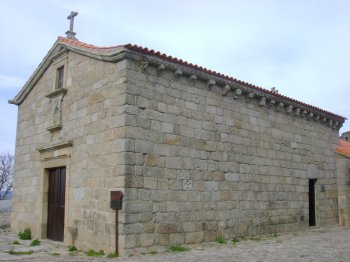
Igreja da Misericórdia de Mangualde/ Casa do Despacho
- heritage
Rua Albertino de Macedo, 5
3530-219, Mangualde
Its construction took place between the years 1721 and 1724, on a project by the architect Gaspar Ferreira. It comprises a nave, a sacristy and a dispatch room. The filling it received for the interior turned it into a fine example of Baroque art from the Johannine period. Highlights include tile panels with Christian symbolism, referring to scenes from the New Testament, scenes from the lives of Mary and Jesus, tiles from Fábrica do Rato in the sacristy and details of the main altarpiece.

Igreja da Misericórdia de Oleiros
- heritage
Rua Dr. Francisco Rebelo de Albuquerque
6160-413, Oleiros
Religious architecture built during the reign of D. Manuel I, with a single nave and niche on the main facade, on which appears the inscription with the date 1714, which probably indicates the year in which the reconstruction works were completed. Inside you can see the national style gilded altarpiece and the images of: S. João Evangelista, Nossa Senhora das Dores, Senhor dos Passos and Senhor Morto. These images are life-sized and highly expressive.
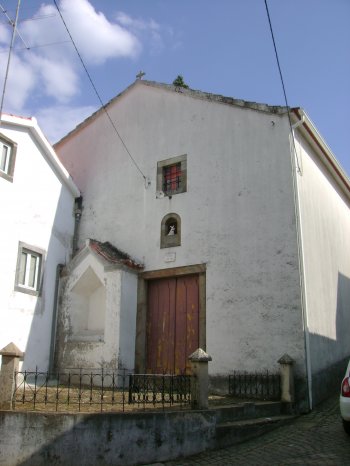
Igreja da Trindade
- heritage
Rua da Trindade, 115
4000-220, Porto
Planned by the architect Carlos Amarante, this church was built along the XIX century, by initiative of the Ordem da Trindade, at the Largo do Laranjal. The façade is classical and the walls are filled with neo classical retables. It stands out, in the principal chapel, a big panel representing the Baptism of Christ, by the painter José de Brito. The religious order also has several painting works, such as the Resende’s portraits and several copies of Italian painters, such as Rafael, Ticiano and Caravaggio.
